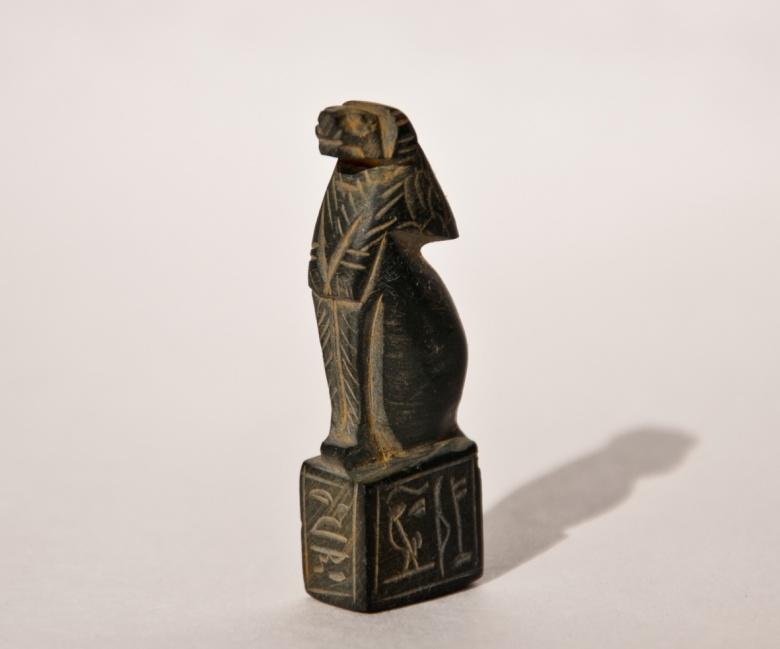Bastet Goddess: Introduction
Having been the subject of a major cult following in 2890 BC, i.e., the era of the Second Dynasty in Ancient Egypt, Bastet remains one of the most famous Egyptian goddesses. The name of the goddess may vary; she is often called Bast, Bastet, Beast and Ubaste as well, though “Bastet” is the most common way of spelling her name. Appearing before the cultures of Ancient Egypt were incorporated into a single philosophy, the cult served as the key factor for the unification process to commence.
Bastet Goddess’ Characteristics
In Lower Egypt, where the greatest amount of the cult followers was located, Bastet was considered the goddess of warfare. In other words, Bastet played the role of a specific protector of Egyptian warriors. It is also quite peculiar that the perception of the goddess changed significantly from the Early to the Late Period of the Second dynasty reign. In the Early period, the goddess was viewed as a strict and uncompromising supporter of the warriors, while in the Late Period, she was viewed as a kind and protective spirit.
Though Bastet was a local deity, Egyptians soon started relating her to Re for some reason. As a result of this rush, the legend regarding Bastet is rather confusing. However, most sources claim that Bastet is both the daughter and the wife of Re. More to the point, Bastet is often considered to have a direct link to the Osirian deities. The legend says that, after fighting Apop, a giant snake, to defend Re, Bastet became his wife. Afterward, Bastet gave birth to Re’s son, Maahes, a man with a lion head.
Because of the issues with the origin of the goddess, her relationships to other gods and goddesses apart from Re are quite mysterious. According to the traditional story, Bastet’s actual husband was Ptah; as far as He is concerned, he is considered to be her father, though the role of the latter is often assigned to Atum.
Though originally Bastet represented a lion, it soon became common to associate Bast with a cat. While at first, the goddess was portrayed as a woman with the head of a lion, later on, she was depicted as either a woman with a cat’s head or simply a female cat. Bastet’s traditional attributes are the seeing eye (the utchat) and a rattle (the sistrum) (God and Goddess of the Month, 2011, p. 29).
Again, unlike other gods, who had a distinct and a very specific animal to be associated with, as well as a very distinct image, Bastet was never portrayed in a specific manner. Consequently, the goddess was depicted as a woman with a lion’s head, a cat’s head, a mask of a cat on her head, and, finally, as a cat. As far as the breed of the cat is concerned, most historians and technologists agree that the goddess’s head was designed after the Egyptian Mau. Picture 1. Bastet (Bastet, 2011, para. 1)

Bastet: Weakness and Strength
Bastet’s key strengths concerned her motherly wisdom. Though the specified qualities were added to her character in the Late Period, they still served as the basis for her image. Bastet incorporated the qualities of a protector and a sensual being, therefore, is the essence of femininity for the Ancient Egyptians. However, the goddess also had certain weaknesses; particularly, her inconsistency and fierceness deserve to be mentioned. The fun fact is that cats were considered the reincarnation of Bastet and, therefore, worshipped.
The stories and anecdotes about Baste are quite numerous. One of the concerns her actual parents. Though Bast’s origins are traditionally traced back to Re and Artemis, it is often believed that Bastet was the daughter of Aset and Wesir and, therefore, was related to Artemis. As a result, Bastet was believed to have a brother as Artemis did. Hence, Heru-a-Aset was considered her brother, which resulted in the rumors of Bastet having other parents than Aset and Wesir (Coulter & Turner, 2013, p. 93).
Reference List
Bastet. (2014). Mercer University. Web.
Coulter, C. R. & Turner, P. (2013). Encyclopedia of ancient deities. New York, NY: Routledge..
God and Goddess of the Month. (2011). Keepers of the Underworld, 23, pp. 25–34.